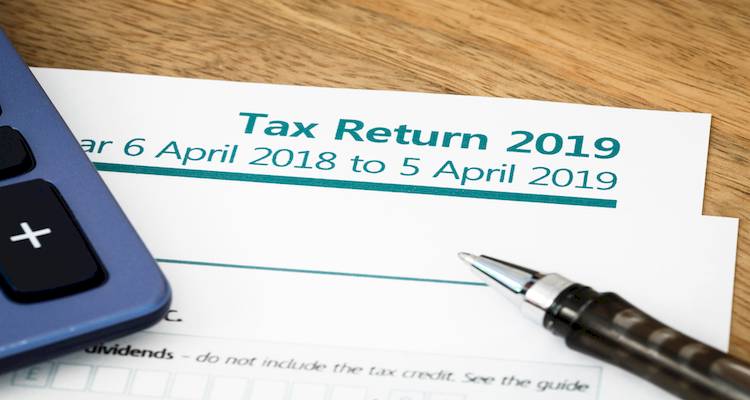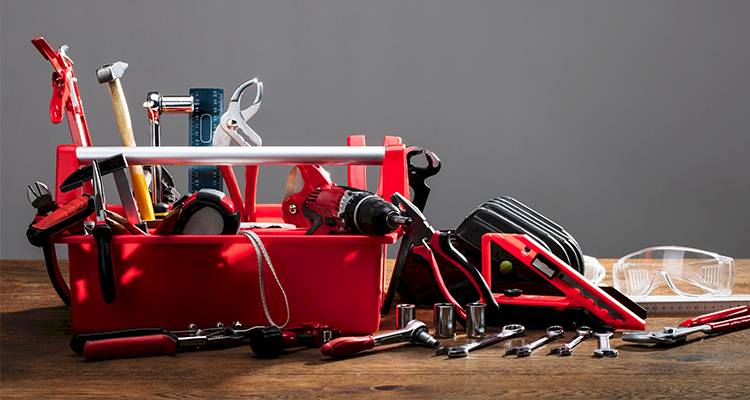How to Register as Self-Employed as a Tradesman
Are you a tradesman thinking about taking the leap into self-employment? Becoming a self-employed tradesperson comes with a lot of benefits, including choosing your own clients, enjoying greater flexibility, earning more money, and having a better work-life balance.
If you have skills in a certain trade and the ambition and dedication it takes to work for yourself, then becoming self-employed could be the perfect opportunity for you.

If you are seriously considering making this move, then this guide contains all of the essential information that you need to know.
In this guide, we go over what it means to be self-employed in the trades industry and how to register as a self-employed tradesperson.
So, if you want to learn more about becoming a self-employed tradesperson, read on to find out everything you need to know.
Table of Contents
What Does Self-Employed Mean?
When someone is self-employed, they run their business themselves and take full responsibility for all the successes and failures that come with the business. Self-employed workers are not paid through the PAYE system, and they don’t have all of the employment rights and responsibilities that come with being an employee.
It is possible to be both employed and self-employed at the same time, so if you’re interested in making a slow transition into self-employment, this is entirely possible.
When a person is self-employed, they will still have protection for their health and safety, and, in some cases, they will have protection against discrimination. The self-employed person’s rights and responsibilities are set out according to the terms of the contract that they have with their client.
Pros and Cons of Being Self-employed
There are a number of advantages and disadvantages of becoming self-employed. Below is a list of the pros and cons of becoming self-employed:

PROS
- Freedom – When you are self-employed, you have the freedom to make all of the decisions regarding your business. You will have the freedom to explore a range of creative solutions to problems that may arise with your business. You also have the freedom to choose how you want to work, where you want to work, and which clients you would like to take on.
- Job Satisfaction – When you work for yourself, you will reap all of the rewards from your hard work. This can be extremely satisfying. When you work for yourself, you have the freedom to work how you want and to create a business that you love working on.
- Salary – When you are self-employed, you have a much higher earning potential. Your entire business is in your hands, and this means that you have the option to take on more work if you want to. Your earning potential is only limited to the number of hours that you choose to work in the day.
- Independence – As a self-employed business owner, you have the option to set your own business hours, and you can fit your work around your other commitments. This often leads to a much-improved quality of life.
- Location – When you work for yourself, you get to choose where you want to work. As a self-employed tradesman, your location will depend on which trade you work in. In some cases, you may be able to work from home. In other cases, you will be working on other people’s homes or in commercial settings. You have the power to choose clients that are close by or within a certain range so that you can avoid long commutes on a daily basis.
- Variety – As you are in control of your business, you will have the opportunity to work on a range of different projects with various clients. Not only will you complete your everyday work, but you will also learn new skills that come with running a business, such as a customer service, administration, and balancing your finances.

CONS
- Lack of Benefits – Being an employee comes with certain benefits. When you are self-employed, you won’t have access to certain things such as holiday pay, sick pay, or any other employee benefits.
- Unpredictable Finances – When you are self-employed, your income can fluctuate by quite a lot depending on how much you work and how many clients you can get. It may take you several months before you make any profit from your business. Plus, you will often need to pay running costs alongside your business, such as maintenance for your tools or petrol money.
- Long Working Hours – As a self-employed worker, your working days will usually be much longer and more irregular than someone who is an employee. Business commitments may mean that you have less time to spend with your friends and family, and you may struggle to manage the balance between your work and home life.
- Starting From The Bottom – When you become self-employed in the first place, it can take time for you to build your business into an established business. It takes time to source clients and to gather all of the tools and equipment that you need to do your job well. You will need a good level of determination and motivation to succeed, even when the progress seems quite slow.
- Responsibility – As a self-employed business owner, you are responsible for paying your self-employed tax bill, National Insurance, pension and everything else that comes with running a business. Running a business can be quite stressful in this way.
- Lack Of Socialising – When you work for yourself, you will usually begin by working alone. This can become quite lonely for someone who is used to working with a team of other tradespeople. This can also mean that you may have to work harder to stay motivated.
How to Register as Self-employed
If you have decided to take the leap into becoming a self-employed tradesperson, then you are right at the start of a very exciting change in your life. Before you get stuck into working for yourself, there are a few things that you need to make sure you do.
The first thing you need to do as a self-employed worker is to set up as self-employed with HMRC. Usually, this will involve registering as a sole trader.
Below is a guide on how to register as self-employed in the UK:
Registering as Self Employed with HMRC
Registering as self-employed is actually more straightforward than you may think. Simply head over to the HMRC self-employed registration page and enter your email address. You will then need to complete the rest of the registration process.
This is quite simple, and you will just need to input some bits of information about yourself and your business. Below is an overview of the information that you will need to provide when you register:

- Your basic personal details
- Your National Insurance number
- Your home address
- Some information about the job that you do
- The date that you started your business
Once you have completed the registration, you will receive a letter from HMRC with your 10-digit Unique Taxpayer Reference (UTR). You will need to keep this number safe as you will need it when completing your self-assessments.
You will also be set up with an online account where you will have access to a range of digital services. It usually takes around 7-10 days to be fully set up as self-employed and receive all of the relevant information. If it is taking longer, then you should contact HMRC for an update.
Naming Your New Business
When you register as self-employed, you will also need to come up with a name for your business. Many tradespeople choose to trade under their own name. However, it is often better to choose a name that makes you stand out from the crowd.
When choosing a business name, you should choose one that is unique, and that reflects the nature of your business. This should be something that people recognise right away.
If you decide to choose a unique name for your business, you will need to double-check that there aren’t any other businesses with that name and make sure that the name isn’t copyrighted.
This will help to prevent any confusion and can help you to avoid the possibility of copyright infringement.
When to Register As Self-Employed
HMRC claim that you should register as self-employed as soon as possible. However, you do have a deadline. Legally, you must register as self-employed by the 5th of October after the end of the tax year that you began trading as self-employed.
For example, if you started your business in May of 2021, then you will need to register as self-employed by the 5th of October 2022.

It’s best not to leave your registration this late. You should aim to do it as soon as possible either before or shortly after you begin working for yourself.
If anything goes wrong and you fail to register by the appropriate deadline, then you could find yourself with a very large tax bill or even a fine, in some cases.
Your Responsibilities After You’ve Registered
Once you have completed your registration as self-employed, you will need to keep up with a number of responsibilities. The most important of these is to keep accurate records.
You will need to record all of your sales and outgoings that are associated with your business. This can include keeping hold of invoices, receipts and making notes of all of your business expenses.
It is also important to keep hold of any documents that you receive from HMRC. These letters may help you complete your self-assessments quickly and properly.
By January 31st of every year, you must file your self-assessment tax return. You will need to make payments to HMRC on or before the 31st of January, and, depending on your earnings, you may also need to pay part of your return on the 31st of July.
You may be able to stagger these payments when needed, provided HMRC agree on a payment plan with you. As well as income tax, you will also need to pay Class 2 and Class 4 National Insurance Contributions (NICs).
If you have an annual turnover above the UK VAT threshold, then you will also need to register for VAT. You can also voluntarily choose to register for VAT if your turnover is lower than this level.
This will depend on the circumstances of your business and whether the choice is right for you, and the nature of your business.
Conclusion
If you are thinking about becoming a self-employed tradesperson, then you will need to register as self-employed. In this article, we have gone over everything you need to know about completing this process, including how to register with HMRC.
We have also provided all of the details about being self-employed, including the pros and cons of taking this leap. If you are on the fence about becoming self-employed, then the information above should help you decide and will help you understand the steps that you need to take to get started.
Sources
https://www.gov.uk/employment-status/selfemployed-contractor
https://www.prospects.ac.uk/jobs-and-work-experience/self-employment/is-self-employment-right-for-you
https://www.gov.uk/register-for-self-assessment/self-employed









